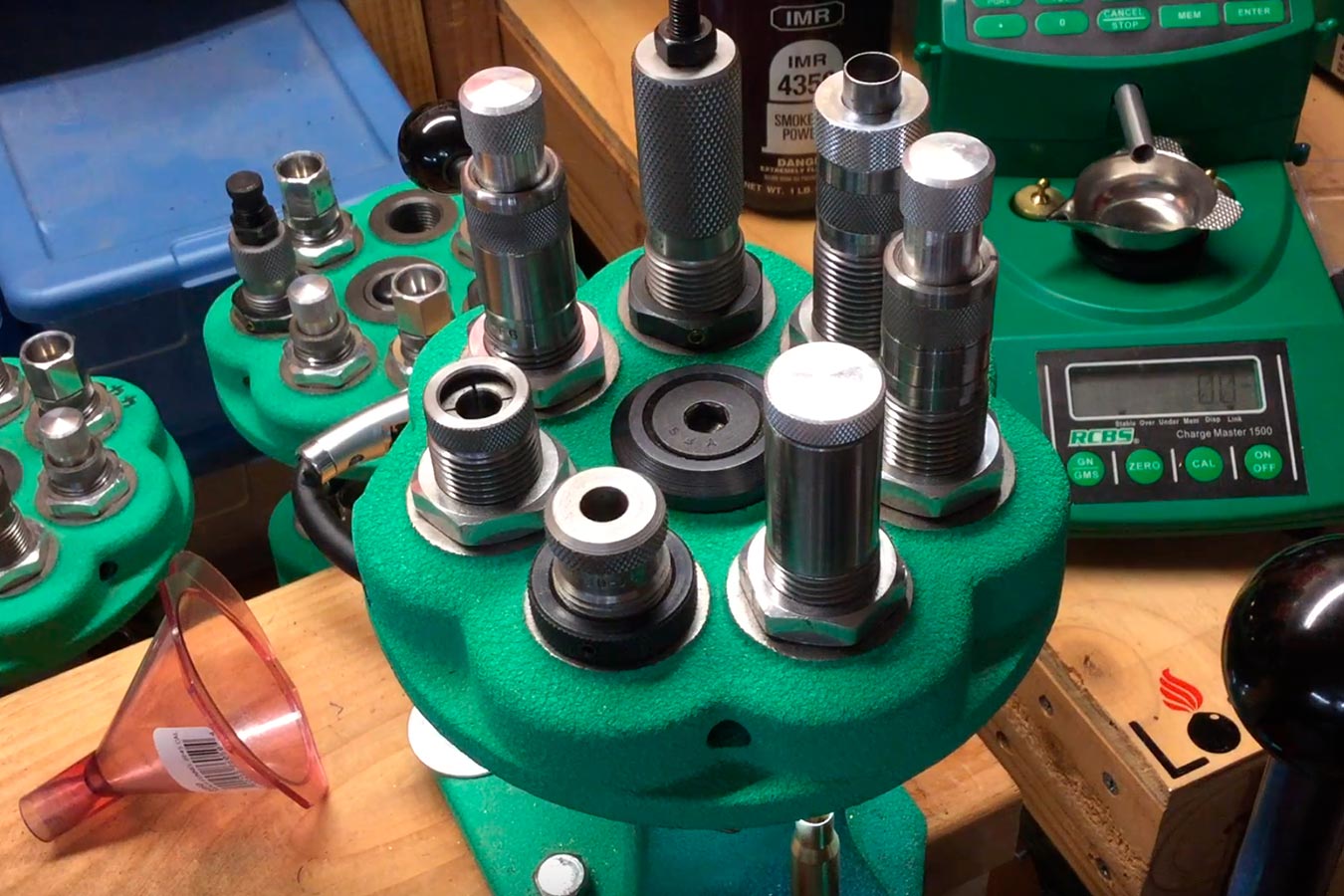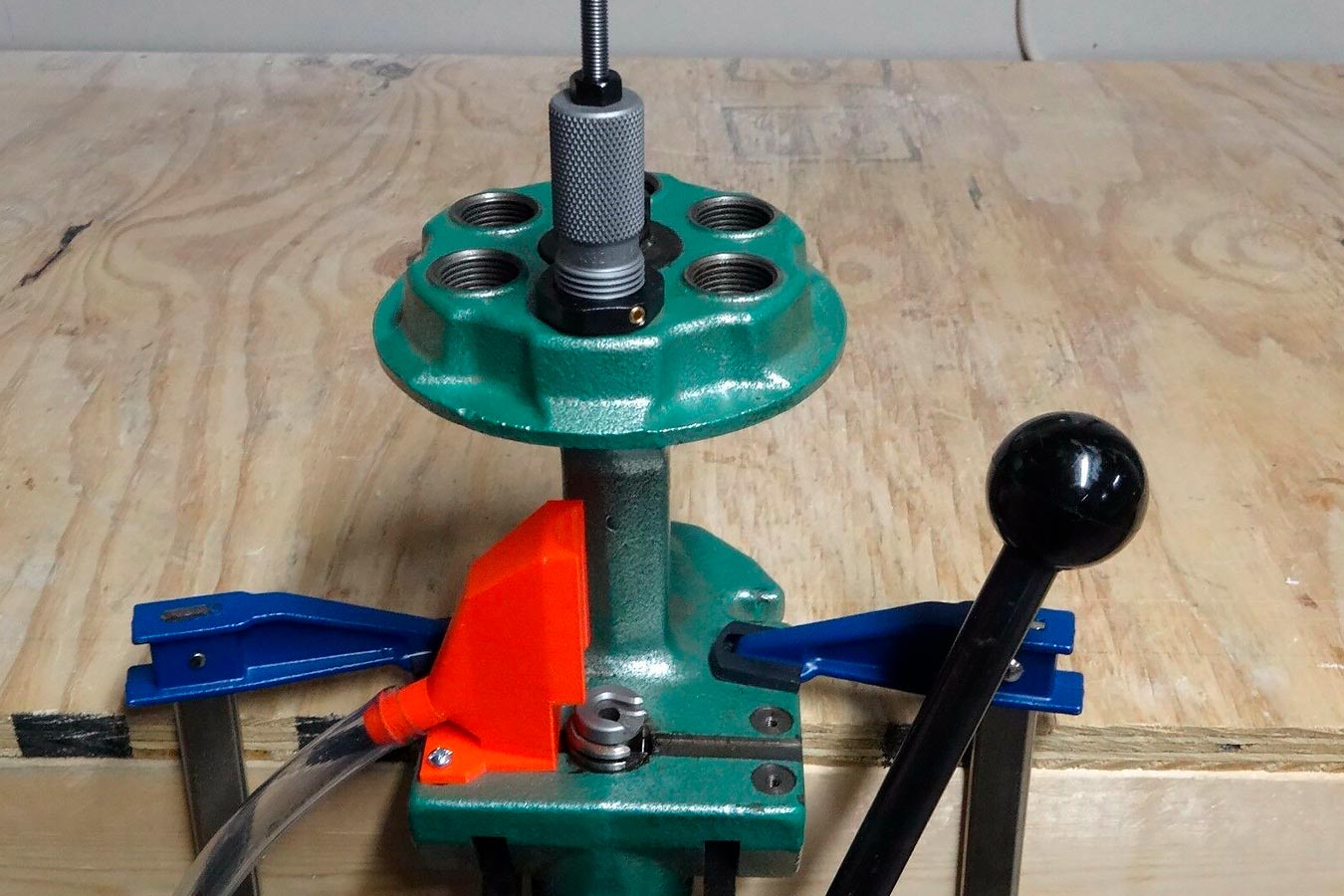When you’re out hunting, you might not want to spend the ammunition of your .308 rifle. It can still be reloaded after it’s been fired. If you hunt regularly, a reloading press can help you easily reuse your spent rounds, saving you time and money in the process. And we’ll help you learn how you can do it! In this article, we’ll be discussing the best progressive reloading press of the year, as well as some factors you should consider before buying one yourself.
Top 3 Best Progressive Reloading Presses: Comparison Chart
| Product | Material | Dimensions | Weight |
| Hornady 095100 Lock-N-Load | Steel | 20 x 14 x 11 inches | 29 pounds |
| Lee Precision Load Master | Cast aluminum | 19 x 11 x 10 inches | 6.61 pounds |
| Lee Precision 90938 | Cast aluminum | 19 x 11 x 10 inches | 6.61 pounds |
What Is a Progressive Reloading Press?
A reloading press is a small piece of equipment that allows you to reuse spent ammunition. It allows the user to install a new primer, refill gun powder, and place new bullets into shell casings. It’s meant to help make reloading much easier without the need for any extra tools. With a progressive reloading press, multiple shell casings can be worked on at a time and progressively reloaded. The shell casings are placed on a rotating plate which advances or indexes them into another station with different tooling. Each station does one or two things at a time such as sizing the casing, inserting the primer, filling the powder, or seating the bullet. This reduces the time it takes to reload spent casings into ammunition as it removes the need to change the tooling after each step. After a casing has progressed through all of the stations, it is then pushed out of the revolving plate and usually into a built-in bin that catches and collects the new ammunition.
Can a Beginner Use a Progressive Press?
While it may look like a complex and daunting device to operate, progressive reloading presses are actually quite simple to use especially if they are auto-indexing. All that needs to be done is to put in the empty shell casings and pull the lever. The press pretty much does all the work for you. Once you are familiarized with the reloading process, you can easily reload up to 500 to 600 rounds per hour.
What Other Types of Reloading Presses Are Available on the Market?
In general, there are three main types of reloading presses. While there are very few variations between them, they are completely different in terms of operation. Each caters to specific needs and has very distinct features.
Single-stage Press
If you’re new to using reloading presses, utilizing a single-stage press is a good start. They’re great for helping novices understand the reloading process and its technicalities. Not to mention, they’re also the most affordable kind of reloading press available. On the other hand, the process can be labor-intensive and time-consuming, since each step needs to be done manually. It should also be noted that only one casing can be mounted and reloaded at a time with this kind of press. However, thanks to the manual process, you can easily check if the round is properly reloaded with each step.
| Pros | Cons |
|
|
Turret Press

This is a step up from the single-stage press since it’s equipped with a revolving turret at the top. While it can still only mount a single casing at a time, the turret allows it to automatically switch between tools for each of the reloading stages. Consider it the middle-ground for reloading press types, since it can process significantly more rounds per hour than a single-stage but not as much as a progressive reloader. This type is beneficial for those who normally work with multiple calibers of ammunition as it requires less work and set-up compared to a progressive press.
| Pros | Cons |
|
|
What to Consider When Choosing a Progressive Reloading Press?

With the variety of presses to choose from, it can be difficult to identify which one would be the best choice for you. So, we’ve compiled a list of some of the factors you should consider so that you choose a press that best suits your needs and preferences. Knowing what you need will help make your progressive reloading press comparison much easier.
Material Quality
The material which the press is made out of will typically determine its strength and durability. Some are made out of solid steel while more affordable models are usually made from aluminum. Do note that a cheaper material does not automatically mean it is less capable. Aluminum presses can be just as hardy as solid steel ones. Their main difference is that a steel body may offer a bit more resistance to friction. Some of the smaller moving parts can be susceptible to breakage and deformation, so be sure to check their strength. Checking progressive reloading press reviews are a good way to estimate the overall quality of a product.
Completed Round Production
Some of the processes involved in reloading empty shells into completed ammunition rounds are different. These differences can also affect the rate of reloading ammunition. For example, a more complex progressive press will have an auto-indexing feature. This automatically advances the shell casings to the next stage of the reloading process with every pull of the lever. This makes reloading a lot faster and gives a higher round throughput. Some presses are designed to measure the right amount of gunpowder to be filled into the casing to ensure that each round performs consistently when fired. Avoid overcharged rounds as they can cause injuries to the shooter. Lastly, if you will be working with multiple calibers regularly with only one press, it’s best to use a progressive reloader. It allows easy swapping of its tooling and dies to help reduce downtime.
Type of Ammo Used
Some models of progressive reloaders are designed for specific ammo types. While some are made to reload rifle shells, others designed to reload shotgun or small-caliber shells. On the topic of calibers, some models are made to only be compatible with a single caliber out of the box. There are purchasable conversion kits and tooling to accommodate other calibers, but these will add to the cost.
Assembly and Usage

While progressive presses are capable of making the most rounds at a time, they are also the most complicated as well as the most expensive. Because it has more parts than a single-stage and a turret press, it’s not only heavier but also more difficult to learn how to set-up especially for beginners. If you’re just starting out, go for a progressive reloading press that is easy to assemble and set-up. Some presses will have fixed features – these can help shorten the amount of time you’ll need for assembly.
Reloading Rates
Choose a press that caters to your needs. Consider whether or not you need to reload your shells to guarantee accuracy when shooting or if you need a bulk of rounds in a shorter time. Progressive reloading presses can, on average, process between 400 to 800 or more rounds per hour depending on the model. The more expensive models usually tend to be more efficient with reloading.
Optional Accessories
Certain brands and companies may offer more accessories that can aid in the reloading process. Component feeders, for example, allow you to automatically reload cases. Some even put the components into place so would only need to make sure that the feeder is filled with casing shells.
Notable Brands of Progressive Reloading Presses

Hornady
Hornady offers a good balance between price and specifications without sacrificing quality. With decades of experience, this brand has garnered quite the reputation for its impressive and durable products, earning them several positive progressive reloading press reviews.
Lyman
Lyman’s progressive loader has a wide variety of upgrade options, including a primer orientation sense, digital powder check, and auto-drive system. It may have a relatively high price point, but it offers exceptional quality and precision while being able to produce a maximum of around 1800 rounds per hour.
Lee Precision
Being around since 1958, Lee Precision is known for their LoadMaster line of reloading presses which are popular for their good output, simple design, and affordable price point. They offer one of the best progressive reloading presses for the money.
Dillon
Progressive reloaders made by Dillon are popular for their competitive prices with regard to their features. They also provide a lifetime warranty with their products that even cover damages due to neglect and abuse.
Tips for Using a Progressive Reloading Press

- Follow the assembly instructions that come with the press. Because it has several parts, having a detailed guide will help you avoid confusion when putting the individual pieces together.
- When you’re looking to buy primers, powder, and bullets, opt to buy them in bulk to save on costs.
- Make sure that you use brass casings since primers made from other materials might not work on your press. Sort and clean your bullet casings especially if you plan on reusing them.
Safety Precautions
- Observe proper safety protocols: Remember that you’ll be working with flammable and hazardous materials. When mishandled, gunpowder can irritate your skin and body. Not to mention, lead is incredibly toxic in accumulating amounts. Always wear protective gear to prevent injuries and mitigate exposure.
- You must also wash your hands after using a reloading press and avoiding touching your nose or mouth. Make sure to follow the instructions provided by component manufacturers and wear a dust mask when cleaning up powder from your work space.
- Follow reloading data: Using the wrong amounts of substances or mishandling them can lead to an explosion.
- Always measure the amount of powder you fill into a round: Some reloading presses include a powder scale. It is very important not only to ensure that a round performs as expected but to avoid overcharging it as well.
- Keep materials such as gunpowder and primer away from a heat source: These are flammable materials and may combust unintentionally if heated enough.
Conclusion
The investigation of progressive reloading press was lengthy, but it was worth it as we can now bring you our review of the best progressive reloading press 2023. We hope that it was able to give you an overview of what you should look for in a reloading press. In the end, no matter which model you end up buying, your press is sure to last you for years on end with the proper usage and maintenance.

